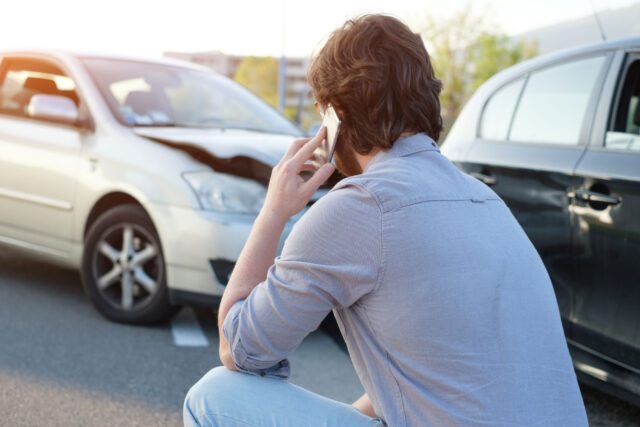What to do in a car accident
Home » News and information » What to do in a car accident
With the warmer weather upon us, you may be out and about on the road more enjoying holidays and day trips. But what happens when things go wrong?
No one ever plans to have an accident, however, it’s a good idea to know what to do in the event of one. Even the smallest accident can leave you shaken, so we’ve created a 5 point summary checklist:
1. Before you travel
Keep your car in tip top condition, making sure you regularly check your levels and tyres so your car is as safe as possible and less likely to cause an accident. We offer a summer service check if you want to be sure (please email us at contact@hlmotors.co.uk to enquire).We also recommend keeping insurance details in your car or on your phone.
2. First actions – check everyone is ok
If you are unlucky enough to be in accident, try to stay calm and take a few deep breathes and, if you are able to do so, move the car to a safe place.
- Firstly, check if anyone is hurt. If they are, immediately dial 999 for the police and ambulance services
- If no one is hurt, it is a good idea to make a note in case someone tries to claim injuries later
- You should also call the police if
- The road is blocked as a result of the accident
- Someone drives off without giving details
- You suspect the other driver is uninsured or unfit to drive (e.g. under the influence of alcohol / drugs)
- You believe someone caused the accident deliberately
3. Next – exchange details
- If there is damage of injury, you must, by law, share your name and address with everyone involved (Note: damage could be related to a person, property or animal owned by someone else)
- Swap insurance information and details with the other driver(s)
- Check whether the other driver is the registered owner of the vehicle, and if they are not, try to find out who the owner is and note that information too (e.g., the accident might involve a company car)
- Record the following details:
- DRIVER DETAILS: Driver, address and telephone number. Insurance details if available
- VEHICLE DETAILS: Of any vehicles involved: make, model, colour, number plate.Also note the direction each was travelling and how many passengers in each
- TIMING: The time and date of the crash
- DRIVING CONDITIONS: The driving conditions, including the weather, lighting, and road quality (such as road markings, wet or muddy, road surface condition)
- DAMAGE: Details of the damage caused and where on the vehicle
- INJURIES: Any injuries to drivers, passengers, pets or pedestrians.
- WITNESS details: Names and contact details of any witnesses
- Take photos: Use your phone to take pictures of the scene, the positions of the cars involved, and the damage to the cars.
If no one else is involved in the accident, for example you cause damage to private property or a parked car, you should leave your details – for instance a note where the owner can see it. This is not just common courtesy – if a witness or CCTV camera saw you and noted your car number, but you drove off, you could be in serious trouble!
4. Contact your Insurance company
Never admit blame, even if you think it was your fault (accidents do happen). Instead phone your insurance company as soon as possible (ideally at the time of the accident) and leave it to them. They will ask for:
- Your policy number or information to identify you, such as your post code and car registration number
- The details you have recorded above
They will then take you through the next steps and the options you have for dealing with your claim. Of course, you may also decide to settle privately to avoid losing your no-claims discount, but it’s still worth contacting your insurer in-case the other party tries to make a claim against you.
5. Let us do the work
Your insurance company will usually take care of the damage and direct you to one of their approved garages to repair your vehicle. However, it is worth knowing that it won’t necessarily guarantee the best quality result, because they will only reimburse that garage for the cheapest parts available from the insurer’s pricing database. This pricing list could include sub-standard or after-market items.
Most people assume they must use their insurer’s approved repairer, however this is actually a myth. Your consumer rights mean that you can use whomever you wish, and your insurer is not allowed to challenge this. So, if you would prefer to use your trusted local garage, you are entitled to make that choice. At H&L Motors, you can simply give us a call and our Accident Management team will take care of the claim from start to finish, and you can be guaranteed the best quality parts and customer service.
If you’d like to know more about our Accident Management service, please give us a call on 020 8977 5865
Published: 08/07/22
Categories: Blog
